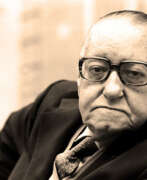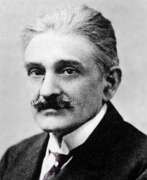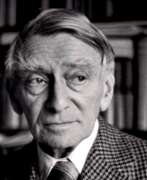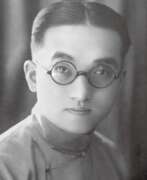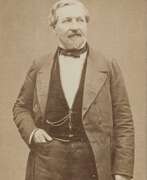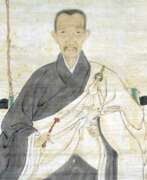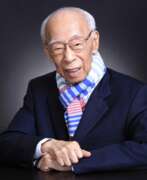Musicologists


Gastone Biggi was an Italian painter, sculptor, writer, poet, and musicologist.
Biggi combined painting with his activities as an art writer and musicologist. In 1962 his key work The Birth of the Point was published, theorizing the study of the sign module, which he would develop throughout his life. That same year he formed Group 1.
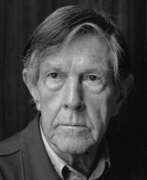

John Milton Cage Jr. is an American composer, philosopher, poet, musicologist, and artist. Cage is considered one of the leading figures of the post-war avant-garde.
Born in the United States, he studied architecture in Europe, but music and painting seemed more interesting to him and he has achieved impressive success there. John Cage is considered a pioneer of uncertainty in music and the unconventional use of instruments, and is highly regarded for his paintings and prints. In addition, he played a crucial role in the development of modern dance and performance art.
His father John Milton Cage (1886-1964) was an inventor.
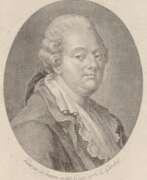

Jean-Benjamin de La Borde was a French composer, music historian, publisher and financier.
De La Borde played the violin and trained in composition. In 1748 he composed his first small opera, and in 1751 his opera Le Rossignol ou Le Mariage secret (The Nightingale or The Secret Marriage) was staged in Paris. The prolific composer went on to compose an average of 30 operas a year for 30 years, mostly of a comic nature.
De La Borde was also a prominent cultural figure of his time: he authored Essays on Music, a four-volume collection of songs for solo voice, and initiated the publication of the General and Private Description of France (1781-96).
For several years de La Borde was valet and favorite of Louis XV; he refused to leave France during the Revolution and was arrested and executed by guillotine on July 22, 1794.
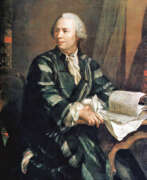

Leonhard Euler was the greatest mathematician of the 18th century and history in general.
Euler brilliantly graduated from the University of Basel and entered the St. Petersburg Academy of Sciences, then began to work at the Berlin Academy, and later to lead it. In 1766, the scientist received an invitation from the Russian Empress Catherine II and again came to St. Petersburg to continue his scientific work.
Here he published about 470 works in a wide variety of fields. One of them is a large-scale work "Mechanics" - an in-depth study of this science, including celestial mechanics. Euler by that time was practically blind, but continued to be actively engaged in science, in the records he was helped by his son Johann Albrecht and stenographers. Leonhard Euler made many fundamental discoveries that brought great benefit to mankind.
His massive contribution to the development of mathematics, mechanics, physics and astronomy cannot be overestimated, and his knowledge in the most diverse branches of science is admirable. During his lifetime, he published more than 850 works that contain in-depth studies of botany, chemistry, medicine, ancient languages, and music. Euler held membership in many academies of science around the world.
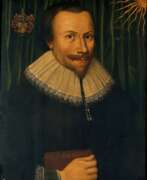

Robert Fludd was a prominent English Paracelsian physician with both scientific and occult interests. He is remembered as an astrologer, mathematician, cosmologist, Qabalist and Rosicrucian.
Fludd is best known for his compilations in occult philosophy. He had a celebrated exchange of views with Johannes Kepler concerning the scientific and hermetic approaches to knowledge.
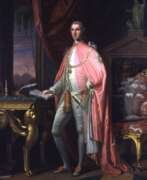

Sir William Douglas Hamilton was a British diplomat, archaeologist and volcanologist, a famous collector, and a Fellow of the Royal Society of London.
He served as British Ambassador to the Kingdom of Naples from 1764 to 1800, but most importantly, he was a passionate researcher of history, art and natural sciences and was a member of the Society of Dilettantes, established for the purpose of studying ancient art.
In Naples, Hamilton amassed a unique collection of antique vases and published an illustrated book about them. In parallel, Sir Hamilton studied the volcanoes Vesuvius and Etna, local volcanic and seismic activity, and the causes of earthquakes in the Neapolitan territory. As a corresponding member of the Royal Society, he sent the results of his research to London. His publications were very valuable for the time.
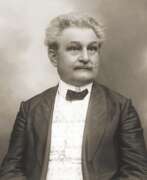

Leoš Janáček, birth name Leo Eugen Janáček, was a Czech composer and musicologist, folklorist, publicist and teacher.
Janáček was a singer in Brno, and studied at the Prague, Leipzig and Vienna Conservatories. In 1881 he founded the Collegium of Organists in Brno, which he directed until 1920. From 1881 to 1888 he directed the Czech Philharmonic Orchestra, and in 1919 he became professor of composition at the Prague Conservatory.
Janáček was deeply in love with national music, collecting folklore and publishing the journal Musical Pages. He was inspired by Moravian and other Slavic music, including Eastern European folk music, to create an original modern musical style.
In his early period of creativity, Janáček was strongly influenced by the musical style and aesthetics of his friend Dvořák. His first opera, Šarka (1887-88), was a romantic work in the spirit of Wagner and Smetana. In his later operas he developed his own distinctly Czech style, built on the intonations of his native speech and folk melodies. Janáček's most important operas are Jenůfa (1904) and Her Foster Daughter, which established the composer's international reputation; The Case of Macro Pulos (1926), From the Dead House (1930), and others. Most of Janáček's operas have been staged in Czech.
Janáček visited Russia three times, and his interest in Russian language and literature resulted in the opera Katya Kabanova (1921) and the orchestral rhapsody Taras Bulba (1918). Janáček also wrote a number of instrumental chamber works. The world-famous composer spent most of his life in Brno, where the vast majority of his works were performed for the first time. Today, Janáček is the most frequently performed Czech opera composer in the world.
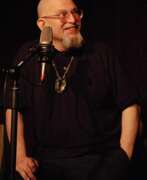

Citizen Kafka, also known as Sid Kafka and The Citizen, is the stage name of Richard Shulberg, a New York radio host and folk musician.
From the late 1970s and throughout the 1990s, Citizen Kafka produced and hosted a number of radio programs on Pacifica Foundation's WBAI-FM in New York City, presenting an eclectic range of live and recorded music, comedy and poetry. One such program was the monthly "Citizen Kafka Show," which Kafka created in 1979 with then-unknown actor John Goodman and musician Kenny Kosek. Along with Pat Conte, he also hosted the program "The Secret Air Museum" on WFMU.
Richard Schulberg was also a violinist and poet, an avid record collector, and the leader of the Wretched Refuse String Band.


Johannes Kepler was a German mathematician and astronomer who discovered that the Earth and planets move around the Sun in elliptical orbits.
Kepler created the three fundamental laws of planetary motion. He also did seminal work in optics and geometry, calculated the most accurate astronomical tables, and made many inventions and discoveries in physics on which further scientific discoveries by advanced scientists were based.
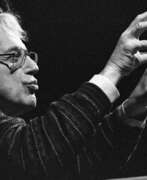

György Ligeti, full name György Sándor Ligeti, was a Hungarian and Austrian composer and musicologist.
Ligeti was born into a Jewish family, but his mother tongue was Hungarian and from an early age he was exposed to Romanian and Hungarian folk music. His first significant work was the Romanian Concerto, which he wrote in 1951. In 1956 Ligeti emigrated from Hungary to Austria, receiving Austrian citizenship in 1968.
In 1957 in Cologne, Ligeti met the experimental composers Karlheinz Stockhausen and Gottfried König and worked with them in the field of academic electronic music, but soon switched to instrumental music. He gained recognition from the Western avant-garde in 1961 with his work Visions and others, in which he used sonorics and the micropolyphony technique he had invented. In 1965 Ligeti completed one of his major works, Requiem.
During his life, Ligeti changed his compositional style and technique several times, ranging from electronic music and sonoricism (1950s and 1960s) to neoromanticism (1980s and 1990s). He has also written many theoretical articles on new currents in music.
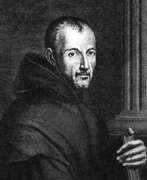

Marin Mersenne (also Marinus Mersennus or le Père Mersenne) was a French mathematician, physicist, philosopher and theologian, and music theorist.
Mersenne was educated at the Jesuit college of La Fleche and went on to study theology in Paris. He also became a member of the Order of the Minims and taught philosophy and theology at Nevers. He developed his ideas about the essence of the world and knowledge, insisting on the importance of experimentation and observation, and contrasted the rational natural world with human reason.
Beginning in 1635, Mersenne founded the Académie Parisienne, the forerunner of the French Academy of Sciences, where France's leading mathematicians and natural philosophers gathered. It provided a forum for the exchange of ideas among scientists and promoted the works of René Descartes and Galileo. The scientist's most famous achievement in mathematics was finding a formula for generating prime numbers, known today as Mersenne's Numbers. In 1644, Mersenne published his studies of Mersenne numbers and their relationship to prime numbers. His work in number theory and arithmetic proved pivotal to the development of mathematics in the seventeenth century.
He corresponded with many other scientists of the era, such as René Descartes, Blaise Pascal, and Pierre Fermat. However, his contributions extend much further, through his role in disseminating the work of the outstanding minds of his time. Mersenne traveled extensively throughout Europe, bringing new scientific ideas to France. He was an important mediator in the exchange of knowledge and contributed to the advancement of science in his era.
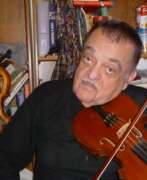

Jovan Mihailović is a Serbian and American musician, artist and writer.
Jovan Mihailović was born and raised in Belgrade, the capital of Serbia, where he and his family survived the Nazi occupation and the transition to communism. From a young age, he demonstrated artistic ability and began to draw, paint and play the violin. He studied at the Belgrade Theater Academy, worked as a playwright in Yugoslavia and traveled throughout Western Europe as a folk musician before immigrating to Sweden, Canada and finally Chicago in 1971.
Jovan was an active member of Chicago's creative community for four decades, writing dozens of novels, plays, and short stories, as well as performing music in restaurants and cafes. He also created many hundreds of drawings and paintings that are full of emotionally intense images from the artist's mystical universe of beauty.
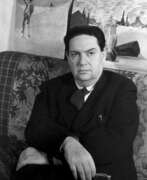

Darius Milhaud was a French modernist composer, conductor, music critic and teacher.
Born into a Jewish family, Milhaud studied at the Paris Conservatoire with Paul Dukas and Vincent d'Indy. During his years of study, he met his future colleagues in Les Six, A. Honegger and J. Taifer. Around 1913, Milhaud began to use bitonality and polychords in his music. He studied polytonality (the simultaneous use of different keys) and consistently developed this technique.
Milhaud's bold, individual style was particularly evident in the ballets Man and His Desire (1918) and The Creation of the World (1923). He wrote incidental music for Claudel's Protea (1920). His other works include the operas Christophe Colomb (1930), David (1954), Medea (1939), and others, totaling 16 operas. A prolific composer, Milhaud wrote more than 400 works, including scores for radio and film, arrangements of the Jewish Sabbath morning service, symphonies, and choral works. Among chamber works, the composer composed many concertos for strings and other instruments.
In 1940 Millau became a professor at Mills College in Oakland, California; in 1947 he was one of the founders of the Summer Conservatory of Music at the Music Academy of the West in California. After 1947, he also taught at the Paris Conservatory of Music almost until the end of his life. His students include many future jazz and classical composers.
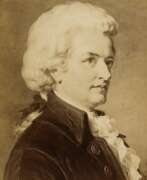

Wolfgang Amadeus Mozart, full name Johann Chrysostomus Wolfgang Amadeus Mozart, was an Austrian composer and virtuoso musician. Mozart is one of the greatest composers in music history on par with Beethoven and Haydn.
Wolfgang was born into the family of violinist and composer Leopold Mozart (1719-1787), at the age of five he had already begun composing and gave his first public performance. His older sister Maria Anna (1751-1829) was also a prodigy, and from 1763 Leopold and his children began traveling around Europe with performances.
Mozart had a phenomenal musical ear, memory and was a superb improviser. Unlike any other composer in music history, he was versatile and wrote in all musical genres of his time. During his short life, Mozart composed more than 800 works, many of which are recognized as the pinnacle of the symphonic, concert, chamber, opera and choral repertoire. The general public is familiar with the composer's three operas: The Marriage of Figaro, Don Giovanni and The Magic Flute.
Society did not immediately appreciate the scale of Mozart's genius. It was only many years later that the vivid image of a prodigy, a refined salon composer who could miraculously think through an entire work in his head, gave way to the image of a serious, meticulous and brilliant creator of music.
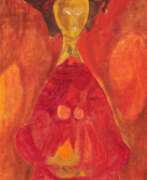

Felipe Orlando, full name Juan de Dios Felipe Orlando García Murciano, was a Spanish-Cuban artist who lived in Spain and devoted himself to writing for a living through painting. He was an anthropologist by training and a musicologist by hobby.
Belonging to the artistic avant-garde movement that emerged in the 1930s, it is difficult to place his painting in the mainstream of young modernists.
Felipe Orlando's painting is characterised by a constant development. It begins with paintings that could be called figurative. They are usually always interior scenes in which women, Afro-Cubans or still lifes take centre stage.
After moving to Spain, his painting develops towards abstraction, especially the informal current, but always presents some figurative reference. Serenity and lyricism prevail in the textures. The titles are suggestive and colour is more important than form.
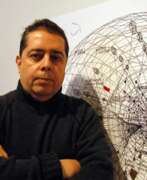

Emanuel Pimenta, full name Emanuel Dimas de Melo Pimenta, is a Brazilian-Portuguese musician, architect, photographer and media artist.
In the late 1970s, Pimenta began working in the synthesis of visual arts, music, architecture, media systems, photography and urbanism. He also developed graphic music notation in virtual environments. The results of his research bridging art and science are presented as works in major museums, foundations and art collections in several countries.
Emanuel Pimenta develops music, architecture and urban projects using virtual reality and cyberspace technologies. His music concerts integrate visual art and have been held in different countries over the last twenty years. In 2016, he completed his third opera entitled Metamorphosis. In 2017, Pimenta was awarded the gold medal of the Paris Academy of Arts, Sciences and Letters. Emanuel Pimenta is also a prolific writer: more than eighty of his books have been published since the 1970s.
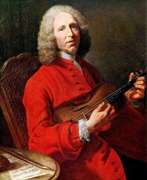

Jean-Philippe Rameau was a French late Baroque composer and music theorist.
Jean-Philippe's father worked as an organist all his life, so his son learned notes before he learned to read. He continued his musical education in Milan, playing the organ, violin and harpsichord. Rameau wrote works for the Paris theaters, composed sacred and secular music, and in 1745 became a court composer.
Rameau wrote many pieces for harpsichord, works for chorus and cantatas. Today he is recognized as the greatest French composer and the most prominent figure in the music of the 18th century.
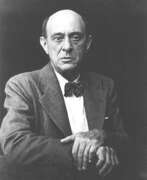

Arnold Schoenberg, real name Arnold Franz Walter Schönberg, was an Austrian and American composer, representative of musical expressionism, teacher, musicologist and conductor.
Schoenberg came from a Jewish family and began studying the violin at the age of eight and later the cello. While working as a bank clerk, he simultaneously studied composition with Alexander Zemlyansky (1871-1942) and soon wrote his first string quartet (1897) to acclaim. With the help of Richard Strauss, he obtained a teaching position in Berlin, and lived for a time in two cities. In 1904, Alban Berg and Anton Webern began studying with Schoenberg, and this largely determined their future artistic careers.
Around 1906, through much experimentation, Schoenberg came to the conclusion that tonality should be abandoned. He created new methods of music-making and composition involving atonality. In the subsequent period of "free atonality" from 1907 to 1916, he composed the monodrama "Reason", "Five Orchestral Pieces", "Pierrot Lunaire" and other works.
In 1933, due to the rise of National Socialism in Germany, Schoenberg was expelled from the country and emigrated to the USA, in 1941 he took American citizenship and taught at the University of California at Los Angeles until 1944. The works of this period demonstrate the composer's ever-increasing skill and freedom in the use of the 12-tone method.
Although Schoenberg was never accepted by the general public, he nevertheless had a significant influence on 20th century music, being the founder of the New Viennese School of Composition.
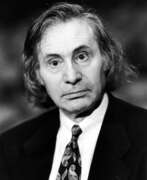

Alfred Garrievich Shnitke (russian: Альфред Гарриевич Шнитке) was a Soviet and Russian avant-garde and postmodernist composer, music educator and musicologist.
Alfred's father was journalist and Russian-German translator Harry Shnitke, his mother was German teacher Maria Vogel, and Russian and German were spoken in the house. In 1946-1948 he lived with his family in Vienna, where he learned to play the piano and compose. From 1948 he lived in the Moscow region, then in Moscow. In 1953 Shnitke graduated from the conducting and choir department of the Music and Pedagogical College (now the Shnitke Moscow State Institute of Music), and in 1958 from the Tchaikovsky Moscow Conservatory. Between 1961 and 1972 he taught instrumentation, score reading, polyphony and composition at the Moscow Conservatoire. From the mid-1970s he appeared as a pianist, performing his own compositions.
In the early 1960s Shnitke turned his attention to modern compositional techniques, including dodecaphony, became an active supporter of the European musical avant-garde and tried to find his own style. His first significant achievements in this field were Dialogue for cello and seven instrumentalists (1965) and the Second Violin Concerto (1966).
Shnitke wrote more than 200 musical works in various genres, including the operas The Story of Dr. Johann Faust (1983-1994) and Life with an Idiot (1991); and the ballets Labyrinths (1971), Sketches (1971-1985) and Per Gynt (1986). Among his choral works, Requiem (1975) is widely known, as well as Poems of Penitence for a cappella choir (1987) and others. The composer wrote nine symphonies, concertos for violin, viola, cello, piano and other instruments. Shnitke also wrote music for many famous and popular films and cartoons from 1964-1994, as well as for theatrical productions of the main theaters of Russia.
Alfred Shnitke is an Honored Art Worker of the RSFSR, winner of the N.K. Krupskaya State Prize of the RSFSR and the State Prize of the Russian Federation. In 1990 the composer, together with his wife, pianist Irina Kataeva-Shnitke, moved to Germany and received German citizenship, as an exception he was allowed not to renounce his Soviet citizenship. He taught composition at the Hochschule für Musik und Theater in Hamburg, and was elected a member of the West Berlin Academy of Arts, the Bavarian Academy of Fine Arts, and the Royal Swedish Academy.
Shnitke died in Hamburg from the effects of four strokes, and is buried at the Novodevichy Cemetery in Moscow.
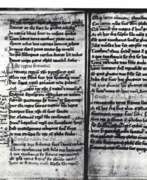

Hugo Spechtshart von Reutlingen, also Hugo von Reutlingen or Hugo Spechtshart, was a German chronicler, educator and priest.
A member of a wealthy family in Reutlingen, Hugo Spechtshart was dean and later chaplain at Marienkapelle. He is known as the author of a chronicle from Roman times to the 14th century in Latin verse. The museum in St. Petersburg, Russia, has his chronicle manuscript with Geisslerlieder melodies sung in the plague year of 1349.
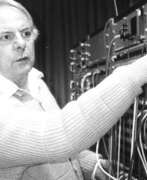

Karlheinz Stockhausen was a German innovative and avant-garde composer, conductor, and musical theorist.
Stockhausen studied at the State Academy of Music in Cologne and the University of Cologne, then in 1952 in Paris with composers Olivier Messiaen and Darius Millau. Returning to Cologne in 1953, he joined the electronic music studio West German Broadcasting (Westdeutscher Rundfunk), of which he was artistic director from 1963 to 1977. Stockhausen created his first electronic music piece in 1953.
In the mid-1950s Stockhausen studied phonetics, acoustics and information theory at the University of Bonn, all of which he used in his musical compositions. From 1953 he began teaching composition in Darmstadt and later organized seminars in Cologne. From 1971 to 1977 he was already professor of composition at the State Academy of Music in Cologne.
Stockhausen used both electronic and traditional instrumentation and supported his approach with rigorous theoretical reasoning and radical innovations in musical notation. He ensured that sounds were equally interesting regardless of the order in which they appeared; random decisions of musical order play an important role in many of his compositions.
Stockhausen lectured and gave concerts with his works throughout Europe and North America. As a creator and theorist of electronic and serial music, he had a significant influence on avant-garde composers of the 1950s and 1980s.
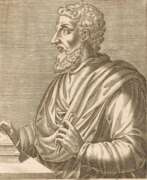

Marcus Terentius Varrō, sometimes called Varro of Reatinus, was an ancient Roman scholar-encyclopedist and writer.
Varro was a very prolific writer: the titles of his 74 works are known, totaling 620 books. Varron was engaged in logic, language, poetry, history, law and geography, history, art, history of literature, theory of music. Judging by the surviving accounts of his contemporaries, the most significant of Varron's lost works were "Divine and Human Antiquities" (Antiquitates rerum humanarum et divinarum) in 41 books and "Portraits" (Imagines) in 15 books, which contained biographies of famous Greeks and Romans, as well as 700 portraits that illustrated the text. The treatise "On Agriculture" (De re rustica) in three books has survived in complete preservation.
